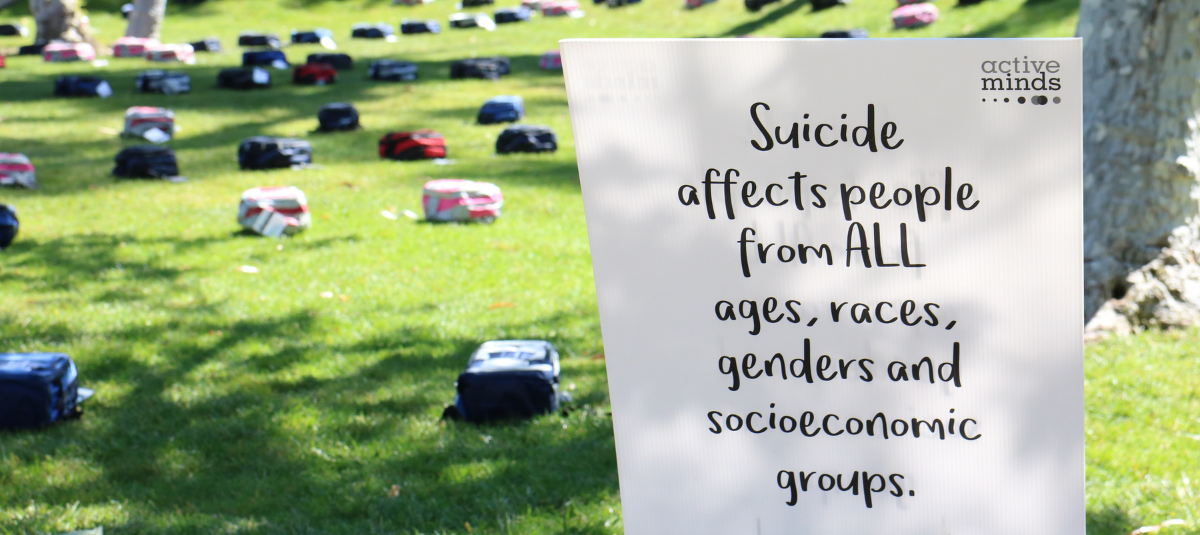Content Warning: Suicide, self-harm, trauma, psychiatric hospitalization.
Two important things to know: Mental health is treatable. Suicide is preventable. When we all have the facts about mental health, we can better support the loved ones in our lives in getting the help they need. Unfortunately, while suicide remains the second leading cause of death for young adults, there is still so much confusion about this important issue. So, below, we have debunked 13 common myths about suicide to help you have open and honest conversations about mental health.
If you or someone you know is struggling, don’t be afraid to reach out for help. Text “BRAVE” to 741-741 or call 1-800-273-8255 to speak to a trained crisis counselor.
MYTH: It’s dangerous to ask someone if they are suicidal.
Asking someone directly about suicide will not give them thoughts they did not already have. People who battle with suicidal thoughts often want to be heard and validated but may struggle with figuring out how to share. Initiating this conversation with someone who is struggling may help them talk about what they are going through and connect them with important resources. Regardless of how they may respond in that moment, starting the conversation will let them know that you are there for them and that you care about their safety. It takes courage to ask the question: “Are you considering suicide?” For more information, check out Active Minds’ Offering Help page.
MYTH: Someone who “has their life together” (has a job, family, and friends) is not at risk of suicide.
Suicidal thoughts and actions can affect people of all ages, races, genders, life experiences, and more. Even though someone’s life might look “picture perfect” from the outside, they may be struggling on the inside. No one is immune to mental health challenges. This is why it’s so important to check up on your friends, even those who appear to be okay. Learn Active Minds’ V-A-R tool for active listening in the everyday.
MYTH: People who die by suicide are selfish.
People who are considering suicide often mistakenly believe themselves to be a burden on others. Instead of stopping a conversation with the belief that suicide is selfish, keep the conversation open by understanding and alleviating the veil of silence that too often surrounds the topic of suicide. Keep in mind that suicide itself is not the problem when someone is struggling – it is a solution to a perceived insolvable problem. Supporting people in their time of need and talking openly about what they are going through is how we can help prevent suicide.
MYTH: There is typically a singular cause (bullying, a break-up, rejection) that leads to someone ending their life.
Suicide is rarely, if ever, caused by a single factor, even if that factor is mental illness. Mental health professional Stan Collins compares factors that contribute to suicide to the game Jenga: while one block may ultimately be the tipping point, the structure of the tower was compromised by many misplaced blocks, which is what actually led to the tower toppling.
Suicide is complex and should not be oversimplified. Risk factors for suicide include previous suicide attempts, access to firearms, family history of suicide, trauma, relationship problems, substance use, financial stress, and more.
MYTH: All people who experience suicidal thoughts have been admitted to a psychiatric hospital.
While hospitalization is most likely the safest option for someone who is experiencing thoughts of suicide, others may be able to manage their suicidal thoughts with different levels of care, such as mental health professionals or support from loved ones. Everyone’s struggle is real and valid, and they are deserving of the support that is right for them.
MYTH: All people who have thoughts of suicide will act on them eventually.
Passive suicidal ideation is a phenomenon that ranges from fleeting thoughts of indifference towards life to contemplating a suicide attempt. Some people who struggle with thoughts of suicide are not necessarily in immediate danger. People who experience passive suicidal ideation may need to manage these difficult thoughts on a daily basis with the help of their support systems and trained professionals. Chronic suicidal ideation takes on many forms, and passive ideation can turn into active ideation; so crisis safety plans and open communication with treatment providers, friends, and family are important protective factors of maintaining wellbeing.
MYTH: If you limit someone’s access to lethal means to suicide, they will find another way to end their life.
Most suicidal crises are short-lived. Reducing access to fatal means, particularly firearms, when someone is struggling with thoughts of suicide can substantially reduce the risk of suicide. Check out the Active Minds Transform Your Campus Guide on Means Reduction for guidance on how to reduce access to lethal means on college campuses.
MYTH: People take their own life “out of the blue.”
Although it often feels sudden for friends and loved ones, people who die by suicide have likely fought a long and extremely difficult battle. Common warning signs to be mindful of include giving away possessions, saying they want their life to end, behaving in extreme ways, experiencing mood swings, withdrawing socially, and abusing substances. Refer to the Active Minds’ Signs and Symptoms page for further information on warning signs.
MYTH: Suicide and suicidal ideation only happen to people who already have depression or another diagnosed mental illness.
Suicide can affect anyone, regardless of whether or not they have a diagnosed mental health condition. Suicide is complex and many circumstances may contribute to suicides among persons with or without known mental health conditions, including relationship problems/loss, crisis or trauma, substance use, or financial, housing, or legal issues.
MYTH: Someone who made an attempt and “recovered” will not be suicidal again.
While some people who attempt suicide and receive the treatment they need may never experience suicidal thoughts again, some will, and it is important and valuable to engage with ongoing treatment and support options.
MYTH: Everyone who experiences suicidal thoughts have depression.
Many people who have depression do not experience any suicidal ideation, and many people who are affected by suicidal thoughts are not diagnosed with depression.
MYTH: People who self-harm want to end their life.
There are two types of self-harm: 1) self-harm with intent to end one’s life, and 2) self-harm with no intention to end one’s life. Some individuals self-harm as a perceived coping mechanism for a variety of reasons: to process their negative feelings, to feel something physical when they feel numb, or to punish themselves for something they perceive to have done wrong. Self-harm is dangerous and should be taken very seriously; however, it does not necessarily mean someone is suicidal.
MYTH: No one can stop a suicide.
When we can recognize and act upon the warning signs that may indicate someone is considering suicide, we may be able to get them the help they need and reduce or even remove the risk of suicide altogether.
Please speak up when you hear these myths being perpetuated, as one common misconception could prevent a friend or loved one from seeking the help they deserve. Learn more ways you can help change the conversation about mental health by visiting some of our mental health resources: V-A-R®, Offering Help, Referral Resources, and Crisis Information.




